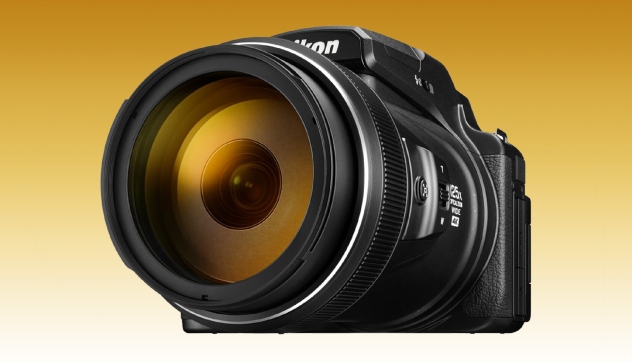Smile! National Camera Day is June 29, a day to celebrate the fact that photography, once so complicated it took a scientist to understand, is now part of our everyday lives. The word “photography” is based on two Greek words that, when put together, mean “writing with light.’” It’s a beautiful way of describing what a camera lets us do — tell a story without the use of words. It all goes back more than 800 years to the invention of the camera obscura. Meaning “dark chamber,” the camera obscura was nothing more than a box with a hole on one side. Light would pass through the hole and into the dark interior of the box, where it would project an image onto the flat inner surface. Unfortunately, when the light was gone, the image disappeared — like Instagram, but without an actual photo. Fast-forward through the centuries to today, when everyone with a smartphone has a camera at their fingertips. Whether you love shooting film and changing lenses or prefer the ease of digital, use June 29 to focus on how cameras have made telling our stories easier than ever.
National Camera Day timeline
The Chinese provide the earliest known written record of their exploration of camera
obscura, or pinhole imagery.
French scientist Joseph Nicéphore Niépce invents the heliograph, a print that required
eight hours of light exposure to create and which soon faded.
Louis Jacques Daguerre invents the Daguerreotype, the first commercially successful
photographic process for creating a permanent image on a metal plate.
William Henry Fox Talbot patents the Calotype process, the first negative-positive
process which makes it possible to reproduce multiple copies of a picture.
In 1884, George Eastman invents the first flexible photographic film. He follows this up
with another first in 1888, when he patents the Kodak roll-film camera.
The first mass-marketed camera goes on sale and the public goes wild.
The Wright Brothers invent the airplane, which revolutionizes aerial photography,
making it a significant tool for the military.
The Leica I becomes the first practical and commercially successful 35 mm camera, a
favorite of photojournalists.
Eastman introduces Kodachrome, the first and arguably best color transparency film.
Henry Luce’s “Life” becomes the first all-photographic magazine to appear on
newsstands
George Land invents the Land Camera, the world’s first instant-picture, nodevelopment-needed
camera.
Numerous manufacturers went to work on cameras that stored images electronically,
resulting in the first point-and-shoot cameras.
The first mobile phone with a built-in camera is introduced.
Kodak stops making film cameras.
National Camera Day Activities
Say cheese!
It doesn’t have to be Thanksgiving to take a family portrait. National Camera Day gives you another reason to get everyone together for a summer photo session. Who knows? It could become the new family tradition.
Take a safari
You don’t need a passport for this one, only enough free time to slow down and look at familiar surroundings in a new way. Been down that street a hundred times? Shoot it at different times of the day as the light changes. Love walking in the woods? Get in close and photograph the knot in a tree or a single drop of rain. Wandering around with a camera can give you a new perspective on how you see the world.
Get creative by scrapbooking
Photos can eat up a lot of space on your computer or, worse, deteriorate when stashed away in boxes. Clear up the clutter and organize your favorites into scrapbooks. Select photos with a specific person in mind to create a deeply personal and highly appreciated gift.
Five Facts That Put A New Face On Photography
Yes, you do have a “good side”
Researchers at Wake Forest University found that the left side of our faces looks better in photographs than the right side does.
The best model was a dead model
Because it used to take hours of exposure to capture a single image, many of the earliest photographic portraits taken were of corpses.
Cheers for the Cheerleader Effect
Research published in the journal “Psychological Science” showed that, because being in a group averages out everyone’s features, we’re perceived as looking better in group shots than in individual portraits.
No, They Weren’t Afraid to Smile
In fact, the reason people look so grim in old photos is one of necessity; it’s almost impossible to maintain a smile when you have to sit absolutely still for hours to get a single shot.
The Selfie Debuts in 1839
That was when Robert Cornelius set up his camera in the back part of his family store, removed the lens cap, and then ran into the frame to capture his own photograph, a process that took several minutes.
Why We Love National Camera Day
Why We Love National Camera Day
Sure, you could pick up a pen or use a computer to write about what’s going on in your life, or you could take and post a picture. Photography lets you show the world how you are feeling, what you are doing, or where you are in a single image.
Photography preserves memories
Over time, photographs can become cherished heirlooms. Whether you keep your pictures stashed in shoeboxes or post them to a website, photography ensures that the events and moments we care about most can be permanently captured, saved, and shared.
Anyone can take be a photographer
There’s no steep learning curve to photography anymore, no bulky equipment to haul around. From simple point-and-shoot cameras to cell phones and tablets, you can always be ready to get the shot.
National Camera Day dates
| Year | Date | Day |
|---|---|---|
| 2026 | June 29 | Monday |
| 2027 | June 29 | Tuesday |
| 2028 | June 29 | Thursday |
| 2029 | June 29 | Friday |
| 2030 | June 29 | Saturday |























